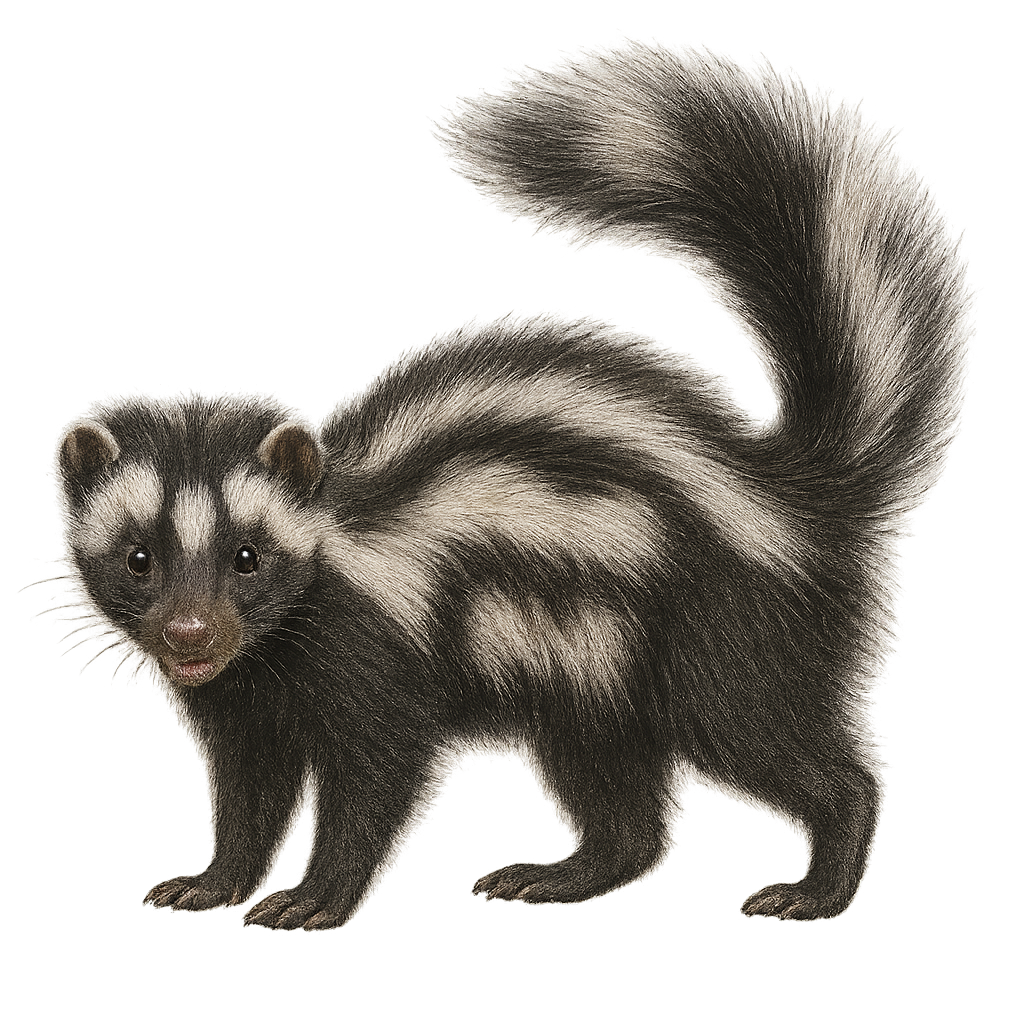Your wildlife photography guide.
Explore the striped polecat in detail, study its behavior, prepare your shots.
Where to observe and photograph the striped polecat in the wild
Learn where and when to spot the striped polecat in the wild, how to identify the species based on distinctive features, and what natural environments it inhabits. The WildlifePhotographer app offers tailored photography tips that reflect the striped polecat’s behavior, helping you capture better wildlife images. Explore the full species profile for key information including description, habitat, active periods, and approach techniques.
Striped Polecat
Scientific name: Ictonyx striatus

IUCN Status: Least Concern
Family: MUSTELIDAE
Group: Mammals
Sensitivity to human approach: Shy
Minimum approach distance: 10 m
Rut period: June to July
Gestation: 36-41 jours
Births: July to September
Habitat:
Savannas, grasslands, wooded areas
Activity period :
Mainly active at night, generally discreet during the day.
Identification and description:
The striped polecat, scientifically known as Ictonyx striatus, is a small carnivorous mammal belonging to the Mustelidae family. It is easily recognizable by its distinctive black and white fur, with white stripes running along its back. This nocturnal predator is primarily active at night, using its keen sense of smell to hunt small rodents, birds, and insects. The striped polecat is equipped with powerful anal glands that emit a foul odor to deter predators. It primarily inhabits savannas, grasslands, and wooded areas of sub-Saharan Africa. Although its appearance may resemble that of a skunk, it is not directly related to it.
Recommended lens:
400 mm – adjust based on distance, desired framing (portrait or habitat), and approach conditions.
Photography tips:
To photograph the striped polecat, it is advisable to use a telephoto lens of at least 400mm to capture detailed images from a distance without disturbing the animal. Being a nocturnal creature, it is best to photograph it at dusk or dawn when the light is soft. Use a tripod to stabilize your camera and avoid motion blur. Be patient and discreet, as the striped polecat is shy and can be difficult to approach.
The WildlifePhotographer App is coming soon!
Be the first to explore the best nature spots, track rutting seasons, log your observations, and observe more wildlife.
Already 1 432 wildlife lovers subscribed worldwide

